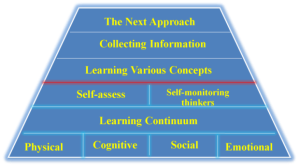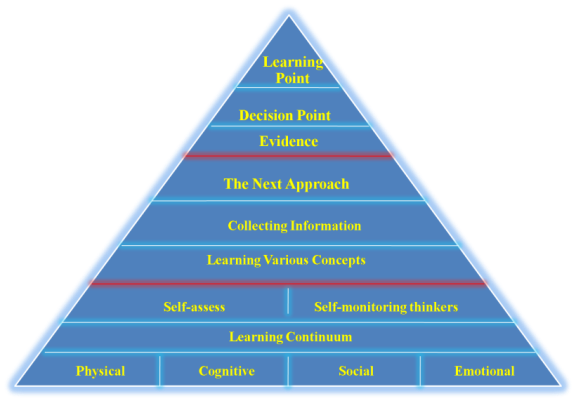by vmbacasmot
An excerpt from the essay by Quinn, T. (2011). Phi Delta Kappan, 93(4) 57-59.
Grades do a sufficient job of telling students how well their rank works in comparison with their classroom peers. But they fail to tell students what they actually might have failed at doing. The author promotes trying new ways to communicating grades to students that would be more helpful to students by telling them which particular skills they need work on and which are strong already. Most importantly, the author says, a new manner of grading could actually shift the focus from the end result to the learning process.
Grades. Almost no one likes them. Most students deplore them, many teachers hate giving them, and I haven’t met one teacher who enjoys the process of determining them. In fact, “grading” is often the bane of a teacher’s existence. Yet, it must be done—at least until we have a major shift in educational philosophy. Nonetheless, grades can be important and useful. Ideally, grades give students constructive feedback on how they performed on an assessment, and, on a societal level, one can argue that we need grades so we can categorize students before we send them to appropriate colleges and hire them for appropriate jobs.
This essay, however, is not about “grading,” it is about the physical act of giving grades. Sure, we all agree that “teachers don’t give grades; students earn them.” Yet, while this adage is correct in spirit, literally, it is untrue. Teachers do, in fact, physically hand students tests, quizzes, and essays, with grades on them. The very manner in which grades are presented or given to students can hold significant implications for a student’s ability to learn from an assessment and the feedback provide. Hence, the manner in which grades are presented is essential to assuring that a teacher assesses not just the learning, but also and perhaps more importantly, provides assessments for learning (Stiggings, 2002).
Unfortunately, grades frequently become the sole focus of a student’s education—often because they’re the sole focus of parents who assume, correctly in many cases, that they’re a primary focus of college admission offices. With so much emphasis on grades students, parents, and even teachers may become unaware of the actual student learning that may or may not be happening. A strong indication that we need not only to concentrate on grades, but not to overlooked the importance of self-monitoring students’ improvements.
In my class “Speech I” most of the time they ask the equivalency of their performance (writing and oral presentation skills/performance) through the traditional way of numeric and alphabetic grades which in my case is the same old routine. But, new approaches can be used like the rubrics are “powerful tools for both teaching and assessment that can improve student performance, as well as monitor it by making teachers’ expectations clear and by showing students how to meet this expectations” (Andrade, H. G.) which I first experienced here in UPOU (University of the Philippines Open University) on how my teachers assess our learning, and especially a big convenience in my part assessing my students from their authentic learning tasks.
Added ideas from my own experiences on giving grades, with the birth of “American Idol,” –a reality singing competition and the concept of the series is to find new solo recording artists where the winner is determined by the viewers, and series employs a panel of judges who critique the contestants’ performances — in the case of my students they are all winners (not only putting their efforts in grades, also enhancing and gaining more from their performance), not only the teacher who gives scores, but can also be judged by self and peer assessment because it encourages the learning process. Adapting the process made “anew” perspective in giving grades to students, assessed also by constructive criticism (helpful feedback that would increase improvements).
Example and assuming your students are your employees, you, the teacher as their boss. Here are 5 Steps to Providing Good Constructive Criticism extracted from instigator.blog by Ben Yoskovitz as follows:
1. Plan before you do it. Make sure you know what you want to say, and why. Have a clear path through the discussion. Leave room for questions and dialogue. Keep the conversation open and flexible, but make sure you plan to get your key points across.
2. Build the person up. Before you get to the criticism itself, focus on positives. Highlight some of the good work the person has done recently, goals that were met or surpassed. Emphasize positive, solid qualities that the person brings to the table. This isn’t about over-inflating egos or setting a person up for a fall; it’s about making sure the person understands they are valued and important, even if the next thing you’ll be doing is pointing out some problems.
3. Provide clear criticism. Now it’s time to bring your concerns to the table. Do it as concisely as possible. And as clearly as possible. Don’t waffle around. Get to the point. Your approach will differ depending on the person you’re speaking to; some would rather you spit it out, others require a slightly more delicate approach. Still, it’s best to make sure your criticisms are as clear as you can possibly make them. Otherwise it makes it difficult to set a clear path towards improvement.
4. Build the person up again. Focus on solutions. Focus on re-emphasizing the positive, while keeping an eye on what needs to be done to improve. Open it up for discussion…“What do you think of my assessment?” Or “What do you think of your recent performance?” The goal at the end of a session like this is to leave the employee understanding the problems, and having a path towards resolving them, without feeling like crap.
5. Follow up. This exercise should never be undertaken without follow up. It may be another meeting scheduled with the employee. It may be an impromptu session, where you review the progress made. If the person knows there’s follow up, they’re going to feel more confident that the criticism isn’t hanging over they’re heads forever. It’s not a permanent dark cloud. Follow up can erase constructive criticism, if the person has improved and met goals. Always follow up. Even if it’s a quick compliment on a job well-done and not a formal second review. Follow up.
On actual presentation of their speeches through constructive criticism (also preserved notes/feedback written by the teacher in their scripts or piece) may be of best used, and putting the given grade in your class record not at least they are well-informed, first on their skills and how to enrich themselves.
As time goes by the asking of grades shifts to asking themselves on how they have improved as learners, and final outcome the grades —reiterating, not the sole of a student’s education.
For the past two years, every 1st Semester I have the above subject developing students oral presentation skills and as well as the writings of their piece (Speeches). Before, I’m having a hard time assessing my students individually which it takes a lot of patience likewise time-consuming, but it helped me a lot, that is, meaningful in my teaching profession!
For us teachers, there is always a room for realigning and refining our lessons through the right kind of assessment eventually will give us the final grade that our students ought to have and for the betterment of oneself.
References:
Andrade, H.G. Understanding Rubrics. Retrieved from http://www.jcu.edu/academic/planassess/pdf/Assessment%20Resources/Rubrics/Other%20eRubric%20Development%20Resources/rubric.pdf
Quinn, T. (2011). A Crash Course on Giving Grades. Phi Delta Kappan, 93(4), 57-59. Retrieved from http://www.questia.com/library/1g1-282444033/a-crash-course-on-giving-grades-tell-students
Stiggins, R. (2002). Assessment Crisis: The absence of assessment for learning. Phi Delta Kappan, 83 (10), 758-765.
Wikipedia. American Idol. Retrieved from http://en.wikipedia.org/wiki/American_Idol
Yoskovitz, B. (2006). 5 Steps to Providing Good Constructive Criticism. Retrieved from http://www.instigatorblog.com/5-steps-to-providing-good-constructive-criticism/2006/10/03/





